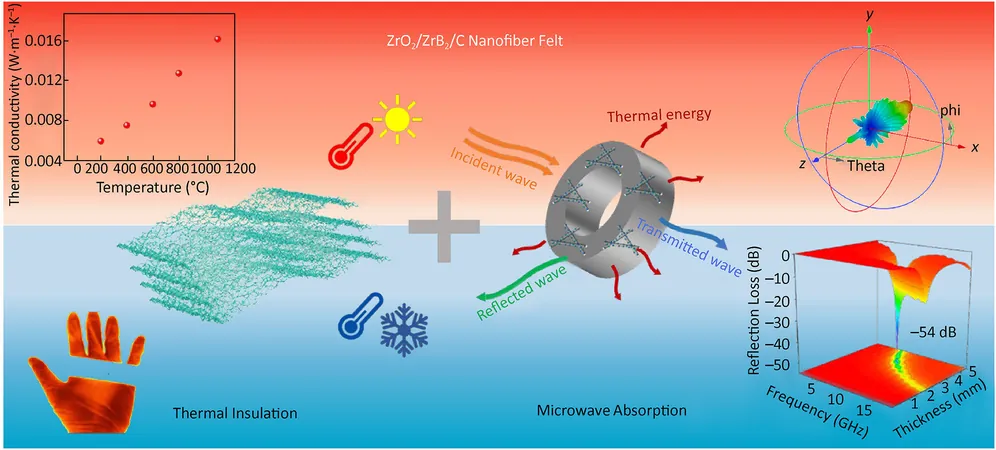
Breakthrough in Material Science: New Nanofiber Promises Unmatched Microwave Absorption and Thermal Insulation!
2025-04-01
Author: Daniel
Introduction
In a significant leap forward for material science, a research team led by Professor Huang Zhulin at the Hefei Institutes of Physical Science, part of the Chinese Academy of Sciences, has unveiled a revolutionary flexible nanofiber felt. This innovative material boasts ultralow thermal conductivity alongside outstanding electromagnetic wave absorption capabilities, making it a game changer in the field.
Research Publication and Background
The details of this groundbreaking research have been published in the Journal of Materiomics, highlighting a timely response to the increasing demand for advanced materials that are not only capable of efficiently absorbing electromagnetic waves but are also lightweight, heat-resistant, and durable in extreme conditions. Traditional carbon-based materials, while frequently used, often fall short due to issues like poor impedance matching and inadequate performance in challenging environments.
Innovative Composite Development
To combat these limitations, the researchers designed a pioneering composite known as ZrO2/ZrB2/C — a blend of zirconia, zirconium diboride, and carbon. By integrating zirconia and zirconium diboride into the carbon fibers, they effectively mitigated the excessive electromagnetic wave reflection that typically plagues pure carbon materials. This ingenious multi-component composite dramatically enhanced electromagnetic wave absorption across a wide frequency spectrum.
Performance Metrics
Remarkably, the new material achieved a peak reflection loss of -54 dB and an extensive absorption bandwidth of 3.1 GHz, showcasing its superb microwave absorption abilities. Furthermore, theoretical analyses have indicated that the ZrO2/ZrB2 components facilitate efficient electron transfer at their interfaces. This process enhances interfacial polarization — a critical mechanism for superior electromagnetic wave attenuation.
Thermal Insulation Capabilities
In addition to its impressive electromagnetic properties, this innovative material also excels in thermal insulation. Its intricate multi-interface structure is engineered to act as a robust barrier against heat flow while its unique surface characteristics improve heat radiation dissipation. Impressively, the material recorded an ultralow thermal conductivity of merely 0.016 W·m-1·K-1 at temperatures reaching 1,100 °C, positioning it among the best performers in the category of thermal-insulating materials.
Implications and Potential Applications
The implications of this study are extensive. It not only opens a new avenue for the development of multifunctional microwave-absorbing materials tailored for complex and extreme environments, but it also heralds potential applications in stealth technology and other advanced engineering sectors. As interest in sustainable and high-performance solutions continues to mount, this groundbreaking research could very well redefine standards in material innovation.
Conclusion
Stay tuned for further developments in this exciting area of research!


 Brasil (PT)
Brasil (PT)
 Canada (EN)
Canada (EN)
 Chile (ES)
Chile (ES)
 Česko (CS)
Česko (CS)
 대한민국 (KO)
대한민국 (KO)
 España (ES)
España (ES)
 France (FR)
France (FR)
 Hong Kong (EN)
Hong Kong (EN)
 Italia (IT)
Italia (IT)
 日本 (JA)
日本 (JA)
 Magyarország (HU)
Magyarország (HU)
 Norge (NO)
Norge (NO)
 Polska (PL)
Polska (PL)
 Schweiz (DE)
Schweiz (DE)
 Singapore (EN)
Singapore (EN)
 Sverige (SV)
Sverige (SV)
 Suomi (FI)
Suomi (FI)
 Türkiye (TR)
Türkiye (TR)
 الإمارات العربية المتحدة (AR)
الإمارات العربية المتحدة (AR)